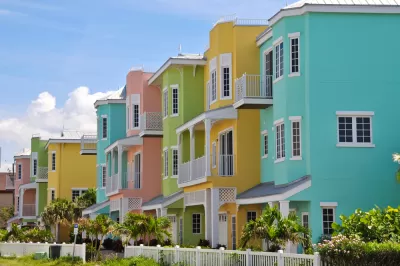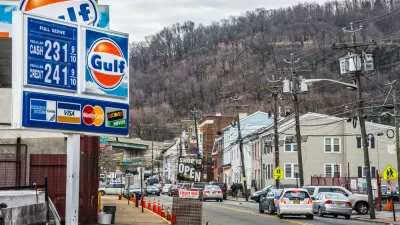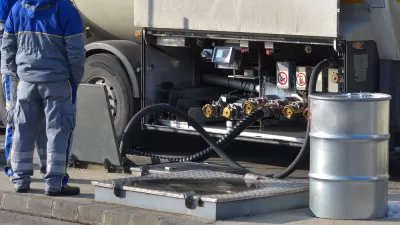Former Maryland Gov. Parris Glendening penned a local opinion for The Washington Post in support of the TCI to advance funding of alternatives to driving and ask readers to shape the controversial initiative by submitting comments by Feb. 28.

Parris N. Glendening, governor of Maryland from 1995 to 2003 and current president of Smart Growth America’s Leadership Institute, wants local readers of the Washington Post to address climate change by participating in one of the country's most important programs to target carbon emissions from driving, the Transportation and Climate Initiative (TCI), calling it "an opportunity to create more walkable and bike-friendly communities served by transit."
Regional leaders from 12 states and the District — from Virginia to Maine — are working collaboratively to develop a regional cap-and-invest system to reduce carbon emissions from the transportation sector and provide a new source of revenue for clean, climate-friendly transportation.
What we do in the Northeast and Mid-Atlantic region can be a model for success if we all work together. We undermine our economic, equity and climate goals by favoring new highways, roads and more lanes that induce more driving instead of transit, biking and walking.
According to the TCI fact sheet [pdf] explaining how the cap-and-invest program would work to reduce pollution, large gasoline and diesel fuel suppliers would have to purchase allowances based on the carbon intensity of the fuels they sell. In addition, a cap or upper limit would be set as to how much carbon pollution can be emitted from these fuels, which would be lowered in time, thus increasing the cost of the emissions, acting similarly to the CO2 allowance auctions operated by the Regional Greenhouse Gas Initiative for the power sector in the same Mid-Atlantic and New England regions.
Fuel suppliers, while not obligated, would likely pass on the allowance costs to consumers, which explains why TCI opponents call it a "gas tax." However, many if not most gas taxes, by law, must be spent on road improvement projects that designed to reduce traffic congestion, such as road widenings, thus increasing driving and emissions. TCI revenue would be used to do the opposite–reduce emissions.
Individual states would determine how to invest revenues, be it for electric vehicle charging infrastructure, public transit improvements, bike and pedestrian infrastructure, transit-oriented development, etc.
"Residents from across this area can offer their comments through Feb. 28 to shape the initiative," adds Glendening.
Related in Planetizen:
-
East Coast Considers Plan to Hike Gas Prices to Mitigate Climate Change, December 30, 2019
- Maryland's Smart Growth Law A Dud According To University Study (on Glendening's policies as governor), November 5, 2009
Hat tip to Kenyon Karl.
FULL STORY: We need better transportation options, not more roads and more lane

Maui's Vacation Rental Debate Turns Ugly
Verbal attacks, misinformation campaigns and fistfights plague a high-stakes debate to convert thousands of vacation rentals into long-term housing.

Planetizen Federal Action Tracker
A weekly monitor of how Trump’s orders and actions are impacting planners and planning in America.

In Urban Planning, AI Prompting Could be the New Design Thinking
Creativity has long been key to great urban design. What if we see AI as our new creative partner?

King County Supportive Housing Program Offers Hope for Unhoused Residents
The county is taking a ‘Housing First’ approach that prioritizes getting people into housing, then offering wraparound supportive services.

Researchers Use AI to Get Clearer Picture of US Housing
Analysts are using artificial intelligence to supercharge their research by allowing them to comb through data faster. Though these AI tools can be error prone, they save time and housing researchers are optimistic about the future.

Making Shared Micromobility More Inclusive
Cities and shared mobility system operators can do more to include people with disabilities in planning and operations, per a new report.
Urban Design for Planners 1: Software Tools
This six-course series explores essential urban design concepts using open source software and equips planners with the tools they need to participate fully in the urban design process.
Planning for Universal Design
Learn the tools for implementing Universal Design in planning regulations.
planning NEXT
Appalachian Highlands Housing Partners
Mpact (founded as Rail~Volution)
City of Camden Redevelopment Agency
City of Astoria
City of Portland
City of Laramie





























